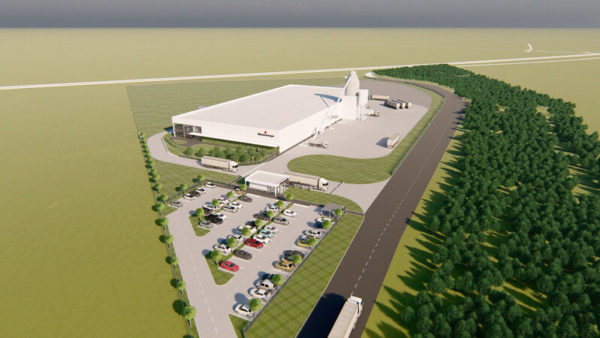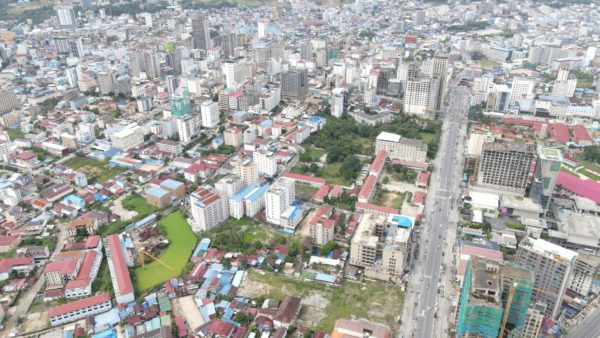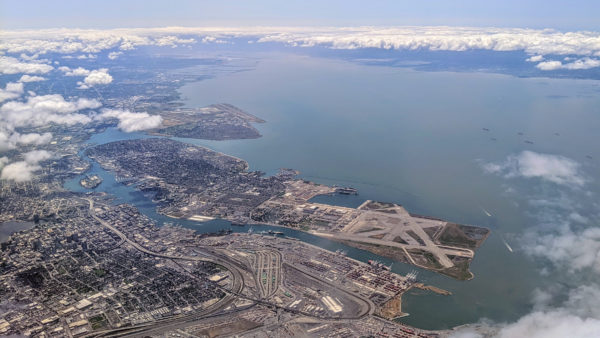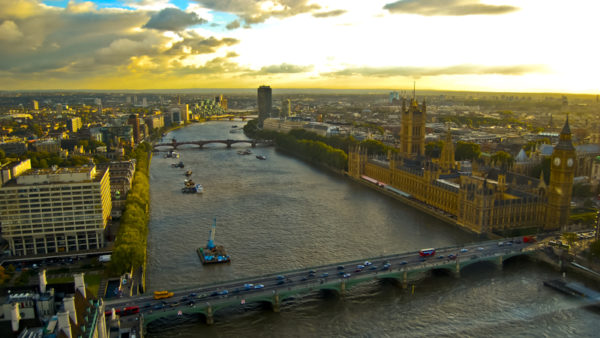After 12 years, two French construction giants have celebrated the symbolic handover to Ukrainian authorities of the massive confinement structure sealing the damaged reactor no. 4 at the Chernobyl Nuclear Power Plant (ChNPP).
"It took a lot of audacity, vision, and a fair amount of madness to embark on this project!" said Patrick Kadri, chairman of Vinci Construction Grands Projets.
Vinci teamed up with Bouygues Travaux Publics in the Novarka consortium in 2007 to build the 108-m-high Chernobyl New Safe Confinement structure, which is designed to keep the site safe for 100 years.
They handed the key for it over to the Ukrainian authorities at a ceremony on 10 July in the presence of Ukrainian President, Volodymyr Zelensky.
The largest moveable land structure ever built began sliding into place over the damaged reactor in 2016, thirty years after the disaster in 1986.
Weighing 36,000 tonnes equipped, the roughly €1bn structure, whose lead financier was European Bank for Reconstruction and Development, has a span of 257m, a length of 162m and is tall enough to house the Statue of Liberty.
Built in is equipment for the eventual decommissioning of reactor no. 4.
More than 10,000 people from many countries put 33 million working hours into the project with no major work accident or radiological incident, Bouygues and Vinci said.
Bechtel was project manager on the contract, which Bouygues and Vinci won in 2007.
"Remember, back in 1992, we had to work out how to do everything from scratch," said Vinci chairman Patrick Kadri. "We faced a blank sheet and had just won a conceptual competition. It took a lot of audacity, vision, and a fair amount of madness to embark on this project!
"The challenges were monumental: to design a state-of-the-art prototype in an extremely constraining environment, constantly pushing against the limits of know-how, striving to secure the cooperation and endorsement of all the stakeholders worldwide, inventing materials that did not exist and unique construction methods.
"This project occupied a major part of our working lives. And we are all aware of the environmental progress that this achievement represents for Ukraine, its neighbouring countries and the whole of Europe."
"One doesn’t get a chance to be involved in two building sites like that one in one’s career," said Marc Adler, Deputy Chief Executive Officer of Bouygues Travaux Publics.
"Because it was huge, because it was complicated, because Europe and the whole world had bet a lot on our success. Each of our trades really went into overdrive and surpassed themselves: the engineers, the radiation protection people, the employees in charge of executing the work, the project managers…not to mention the people in charge of human resources, who recruited staff in more than 30 countries.
"Chernobyl will be known in the history of civil engineering as a concentrate of innovation, and the engineers who took part in this project are already transmitting the teachings of this outstanding endeavour in engineering schools."
Image: The 108-m-high Chernobyl New Safe Confinement structure (Vinci Construction Grands Projets)
Comments
Comments are closed.











Interesting as we celebrate the moon landing 50 years ago – that this milestone should be passed of Europeans trying to contain our terrible errors of the past. All the individual participants in the project have my great admiration for achieving a unique and difficult project – and with no serious accidents or radiation issues. They should get due credit from the whole of Europe.
This is yet another example of how working together can bring the ultimate success of any dilemma. Well done is an understatement.